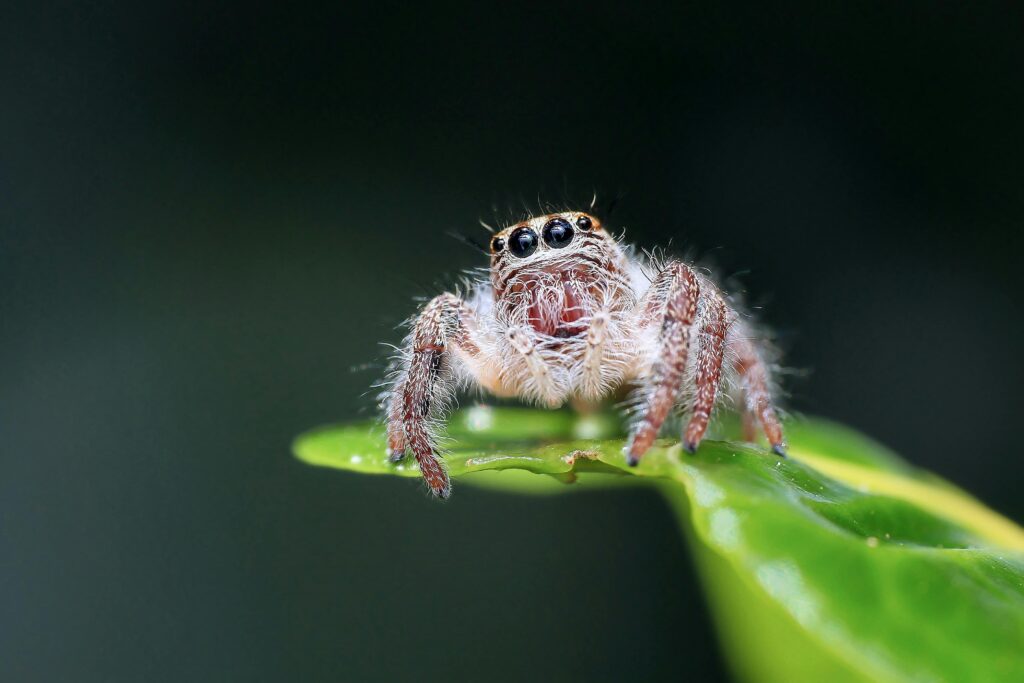Jumping Spider Enclosure.So, you’re thinking about getting a jumping spider, huh? Or maybe you already have one, and now you’re wondering how to give your tiny, eight-legged friend the best home possible. Either way, welcome to the jumping spider fan club! These little critters are fascinating, and while some people might give you the side-eye when you tell them you have a pet spider, trust me—jumping spiders are in a league of their own.
But let’s talk about the most important thing after deciding to bring a jumping spider into your life: their enclosure. After all, if you’re going to have a mini Spider-Man in your house, you’ve got to create the perfect tiny city for them to swing around in, right?
Why Jumping Spiders Make Amazing Pets
Let’s start with the basics. Why a jumping spider? I get it—some people are terrified of spiders (and hey, I used to be one of them). But jumping spiders? These guys are basically the puppies of the spider world. They’re curious, bold, and—dare I say—adorable. Yeah, I just called a spider adorable, and I stand by it. Have you seen their little faces? Their big eyes give them this “Hey, what’s up?” kind of vibe.Jumping Spider Enclosure.
Unlike their web-spinning cousins who just sit there waiting for prey to stumble into their trap, jumping spiders are active hunters. They chase down their food like little predators, which means they need space to move around. And that’s where a good enclosure comes in.
Read More:N8n Webscrasper
Size Does Matter (But Not Too Much)
When it comes to picking out an enclosure for your jumping spider, size is important—but maybe not in the way you think. Jumping spiders are tiny. We’re talking about something that could easily sit on the tip of your finger. So, while it might be tempting to go big and get a massive terrarium, you actually don’t need that much space.
A good rule of thumb is to get an enclosure that’s about 8x8x8 inches or 12x12x12 inches. That gives them enough room to explore and jump around without making it hard for them to spot their prey. If you go too big, your spider might have trouble finding its food, and no one wants a hungry, confused spider.Jumping Spider Enclosure.
And remember, jumping spiders are vertical climbers. They love going up, so the height of the enclosure is more important than the width. Think of it like building a little skyscraper instead of a wide-open ranch.

Picking the Perfect Substrate
Now that you’ve got the enclosure size figured out, let’s talk substrate. That’s the stuff that goes on the bottom of the enclosure, in case you’re not familiar with the term (don’t worry, I didn’t know it either when I started). For jumping spiders, you don’t need anything too fancy.
A simple layer of paper towels, coco fiber, or eco earth will do the trick. Paper towels are the easiest to clean, and if you’re a low-maintenance kind of person, this might be your best bet. But if you want your spider’s home to look a little more “natural,” coco fiber is great for adding a touch of realism. Plus, it helps keep moisture levels stable without getting too humid.
One thing to keep in mind: jumping spiders don’t dig or burrow like some other spiders, so there’s no need to pile on the substrate. A thin layer, about 1-2 inches, is plenty.
The Fun Part: Decorating Your Spider’s Playground
Now, this is where things get fun—decorating! Yes, you’re decorating for a spider, and I promise it’s more entertaining than you’d expect. Your jumping spider needs places to climb, jump, and hide, so it’s like building a little jungle gym for them.
Start with some vertical sticks or pieces of bark. These guys love to climb, and having something sturdy for them to jump off of makes their lives a lot more interesting. I like to add a few fake plants for that wild, natural vibe. And if you’re feeling ambitious, you can even throw in a small cork hide for your spider to chill in.
Jumping spiders also build little silk hammocks where they sleep or molt. It’s like their version of a sleeping bag. They’ll usually make these little silk retreats on a flat surface like a leaf or piece of bark. Watching them spin these tiny hideouts? It’s kind of amazing.
Pro tip: Don’t overcrowd the enclosure with too much stuff. You want to give your spider places to explore, but they also need enough open space to do their signature jumps. After all, they didn’t get the name “jumping spider” for nothing.
Feeding Time: A Tiny Predator’s Delight
Feeding your jumping spider is one of the coolest parts of owning one. These guys are hunters, so instead of sitting back and waiting for food to come to them, they’ll actually stalk and pounce on their prey. It’s like having a tiny, eight-legged lion in your house.Jumping Spider Enclosure.
Their diet consists mostly of fruit flies, pinhead crickets, and the occasional small mealworm. If you’re grossed out by the idea of handling live bugs, don’t worry—jumping spiders are small, so you won’t need to deal with anything too creepy-crawly. Fruit flies are probably the easiest to start with, and you can even buy special fly cultures that are perfect for feeding your spider.
One important thing to remember: always remove any uneaten prey after a few hours. Dead bugs left in the enclosure can lead to mold, and mold is bad news for your jumping spider. Keep things clean, and your little hunter will be happy.
Misting and Water: The Right Balance
Unlike other pets, jumping spiders don’t need a water dish. Instead, they get most of their hydration from the prey they eat. But that doesn’t mean they don’t need water at all.
Once or twice a week, give the enclosure a light misting with water. The mist will create tiny droplets on the walls and plants, and your spider will drink from these. You don’t need to go overboard—a little mist goes a long way. Just be careful not to make things too wet. Jumping spiders like it on the dry side, so keep an eye on humidity levels.
Keeping Things Clean
Let’s talk about cleaning. No one likes chores, but keeping your spider’s enclosure tidy is important. Jumping spiders are pretty clean creatures, but you’ll still need to do some upkeep.
Every few weeks, spot-clean the enclosure by removing any leftover food or spider poop (yes, spiders poop!). If you’re using paper towels as substrate, this is super easy—just swap out the old paper towels for new ones. If you’re using coco fiber or another natural substrate, a quick spot clean will do the trick.
Every couple of months, it’s a good idea to do a deeper clean. Take your spider out (gently, of course), remove all the decor, and give the enclosure a good wipe down. Replace the substrate, freshen up the plants, and you’re good to go.
A Few Personal Thoughts
Can I just say how much fun it is to watch a jumping spider explore its enclosure? When I first got into keeping spiders, I had no idea how much personality they’d have. My spider loves to hang out on the highest branch in its enclosure, just watching me as I work. And I swear, sometimes it looks like they’re sizing me up, like “Hey, you gonna feed me or what?”
There’s something oddly calming about creating a little world for your spider and watching them thrive in it. It’s like having a tiny, low-maintenance pet that’s full of surprises. Plus, jumping spiders are a great conversation starter. Trust me, once you tell people you have a pet spider, the questions come pouring in.
Wrapping It Up: Your Spider’s Dream Home
So, there you have it—a guide to creating the perfect jumping spider enclosure. It doesn’t take much to make your spider feel at home, but putting in a little effort goes a long way. With the right size enclosure, some fun decor, and a little misting here and there, your spider will be living the high life.
And you? You’ll get the joy of watching your spider leap around like the tiny, fearless acrobat it is. Whether you’re a seasoned spider enthusiast or a first-timer, building an enclosure is one of the most rewarding parts of owning a jumping spider. Happy spider-keeping!



